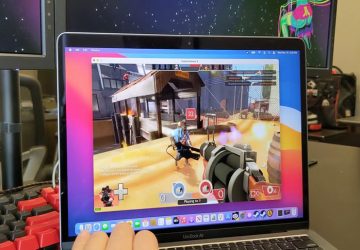5 Game-Changing Strategies That Position MAC to Outshine Windows in the Gaming Arena
Apple has been actively pushing the envelope to reform Mac computers into formidable gaming machines. The widely-held notion of Macs being less capable for gaming than Windows PCs is being questioned due to groundbreaking improvements in both the hardware and software segments, offering gamers fresh alternatives.

Apple's Silicon Revolution
The shift from Intel processors to Apple's proprietary Silicon chips has marked a transformational phase for Mac gaming capabilities. The debut of the M1 chip, in particular, has made a notable impact by outmatching many premium Windows laptops in performance tests. This surge in power has fueled a renewed emphasis on gaming for Mac users, prompting Apple to roll out numerous features to polish the gaming experience.
Optimizing Performance with Game Mode
Taking on the challenge to dethrone Windows as the gaming domain leader, Mac gaming has been enhanced by the implementation of Game Mode within macOS Sonoma. This specialized function is engineered to refine the Mac’s performance when gaming. By allocating system resources primarily to the game at hand, the feature ensures an optimized gaming environment. Enhancements include minimized Bluetooth latency for AirPods, increased Bluetooth polling rates for PlayStation and Xbox controllers, and prioritization of CPU and GPU resources, which collectively contribute to a smoother gaming experience with more reliable frame rates.
The Game Porting Catalyst
Key to the evolution of Mac gaming is the introduction of the Game Porting Tool, which originates from the renowned Wine software. By allowing game developers to port their PC games effortlessly to the Mac environment, this utility simplifies the transition process. Moreover, it enables the conversion of the Windows-centric DirectX 12 API into the Metal 3 graphics framework by Apple, permitting the games to harness macOS’s native power and achieve improved performance.
Motivating Native Game Development
Apple is not just settling for ported games—the tech giant is championing the development of native macOS games. By urging developers to tailor their games specifically for the Mac, this strategy promotes a gaming experience that is far superior to running aligned versions of Windows games. Apple purports that such native gaming can nearly double the frame rates when compared to similar hardware specs. By leveraging the tools within the macOS Sonoma SDK, game developers can transform DirectX graphics into Metal-compatible formats and utilize additional system features such as game controller support, spatial audio, and HDR video—further enhancing the gaming experience.
Challenges and Future Prospects
Despite Apple’s concentrated efforts to make the Mac alluring for both developers and gamers alike, challenges endure. A significant hurdle remains with many game developers continuing to favor Windows as their primary platform, which results in a delayed or absent release for Mac versions of hit games. However, the integration of tools like Apple's Game Porting Tool could serve as a catalyst to narrow this provision gap.
A preference still exists among gamers for custom-built PCs and state-of-the-art gaming laptops—areas where the Mac has traditionally lacked. While recent hardware upgrades reflect substantial progress, they might not yet meet all the demands of gaming aficionados when compared to the very advanced gaming laptops available.
Nevertheless, Apple’s endeavors to position the Mac as a competitive gaming platform is evident. With the release of macOS Sonoma and cutting-edge hardware such as the M1 chip, the Mac is steadily morphing into an enticing choice for gamers. It may not rival Windows in the gaming sphere just yet, but Apple is unequivocally advancing and positioning Macs to challenge Windows in the realm of digital play.
-
1

Ultimate Feast for the Eyes: Top Cooking Shows Every Foodie Must Watch!
-
2

Maximize the Lifespan of Your New Dental Implants with Expert Care Tips
-
3

Ascending with Ease: The Revolutionary Journey of Stair Lift Technology
-
4

Maximizing Your Walk-In Tub's Lifespan: The Ultimate Guide to Enhanced Performance and Durability
-
5

Unlock Bigger Savings: Master the Art of Using Your Gas Rebate Card!










